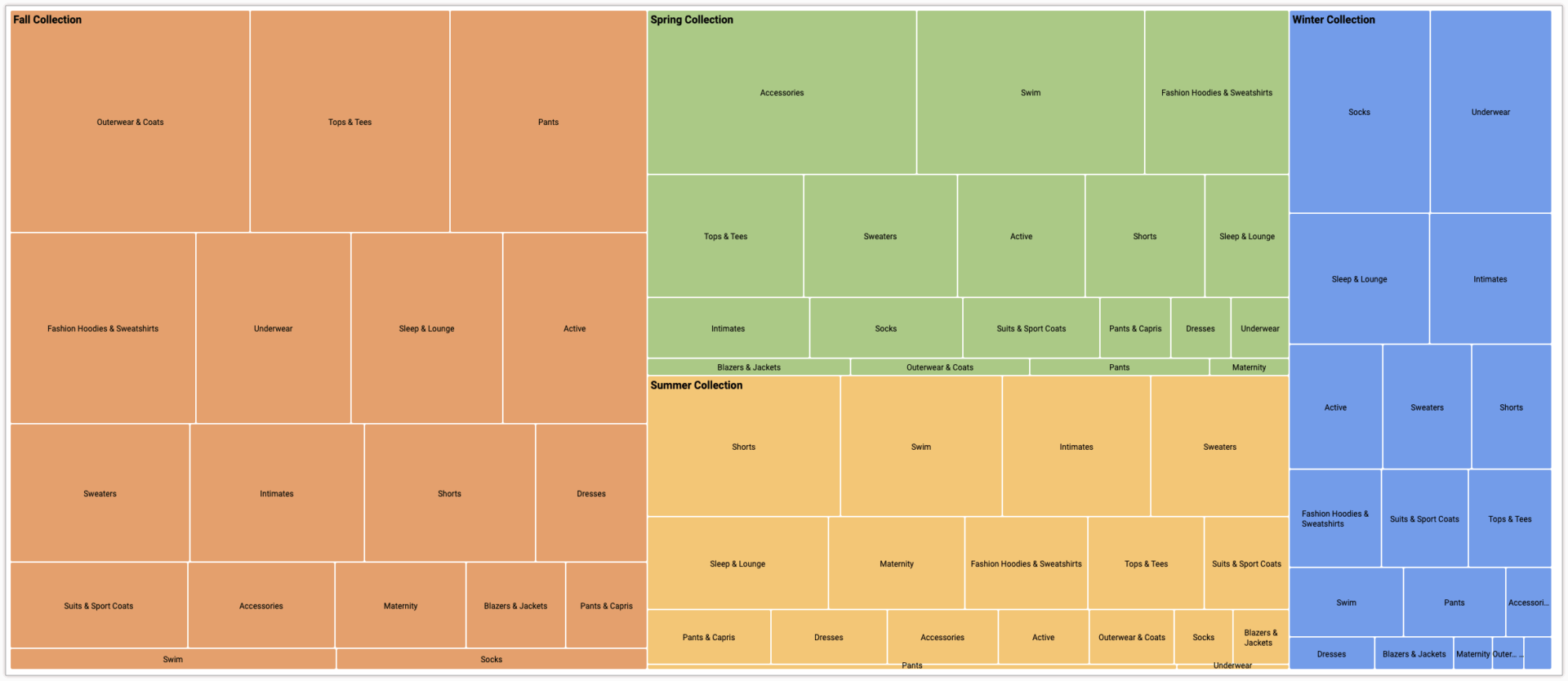In a data-driven, treemap-ping world, the ability to swiftly understand hierarchical information through intuitive visualization techniques has become imperative for informed decision-making.
Treemaps are a powerful method, providing crisp, visual clarity to complex datasets by representing hierarchical relationships through nested rectangles.

Businesses and organizations benefit significantly from optimizing these visualizations, turning raw data into actionable insights. As your strategic partner in navigating the intricacies of data representation, we at Dev3lop believe mastering treemap optimization not only enhances clarity, but also accelerates analytics capabilities, empowering stakeholders to decode critical data rapidly and effectively.
Understanding Treemap Visualization: From Concept to Application
Treemap visualizations are uniquely suited for displaying hierarchical data due to their intuitive layout, enabling swift judgments on information density, proportionality, and relationships. Unlike traditional pie or bar charts, treemaps elegantly represent layered information by converting hierarchical datasets into visually compelling and easily decipherable rectangles. Each rectangle within the treemap symbolizes a subset of data, sized proportionally according to a quantitative value. This hierarchical nesting reveals both the overarching structure and detailed subdivisions simultaneously, reducing cognitive load and aiding comprehension.
Optimally designed treemap visualizations become a powerful instrument in bridging gaps between data complexity and stakeholder understanding, enabling faster insights and better-informed decisions. However, generating actionable results with treemaps requires meticulous attention to coherence, comprehensibility, and performance—part of the advanced skillset we provide through our premium advanced analytics consulting services. Organizations can unlock the full potential of hierarchical data visualization by deploying strategic treemap optimization practices, reducing decision latency and improving overall analytics efficiency.

Treemap visualizations are not limited to specific use cases; they have proven valuable across diverse industries, including finance, healthcare, retail, and technology. Whether visualizing stock market sectors and trends, telecom network performance, sales segmentation, or technology stack inventories, optimized treemaps consistently deliver impactful and immediately interpretable results for decision-makers.
Best Practices and Techniques for Treemap Optimization
Strategic Hierarchy Design and Data Structuring
At the core of efficient treemap creation is the meticulous structuring of hierarchical data. The organization and granularity level chosen directly impact visualization clarity and insight practicability. Hierarchical data must be thoughtfully structured and grouped to ensure perceptible coherence and intuitive navigation. Categories and subcategories should align closely with business objectives, maintaining clear segmentation that aids stakeholders’ ability to glean actionable insights instantly.
Enterprises that struggle with maintaining appropriate data structure often find guidance in techniques such as semantic layer optimization, ensuring data representations remain consistent and meaningful across business users. Structuring data hierarchically in alignment with organizational priorities ensures that treemap visualizations remain representative and valuable for strategic decision-making tasks. Ultimately, strategic hierarchy design reduces redundancy and improves the direct usefulness of hierarchical visualizations for critical discussions.
Visualization Properties and Color Schemes
Optimal visualization properties like appropriate coloring, aspect ratios, and clear labeling play a pivotal role in treemap comprehension. By carefully coordinating color usage—often implementing shades and gradients strategically to highlight critical variations and subcategories—companies can substantially enhance readability and insight clarity. For instance, using color gradients representing data magnitude can quickly communicate variations in quarterly sales, product performance, or financial risk.
Similarly, selecting ideal label placement and having adequately sized text within rectangles prevents information overload or confusion. It ensures stakeholders quickly determine data relationships and hierarchies without confusion or ambiguity. By adhering strictly to accessibility principles—such as contrast ratio compliance—treemaps remain universally legible, ensuring broad usability of visual representations across the board.
Integrating Treemap Optimization with Modern Data Analytics Tools
Leveraging Power BI for Optimal Treemap Efficiency
Instances where decision-makers need rapid interpretation of large hierarchical datasets notably benefit from integrating treemaps within advanced analytics platforms like Microsoft Power BI. Combining optimized treemap visualization with Power BI’s extensive analytical functions is powerful, delivering swift multidimensional analysis capabilities.
Analytics practitioners can choose optimal data import practices—whether importing data directly for speed or leveraging direct query features where real-time data analysis is needed. You can further explore the extraction method choice by reviewing our article Import vs Direct Query in Power BI for more guidance. Proper data localization practices contribute substantially to enhanced treemap interaction experiences, ensuring analytics responsiveness even for immense and complex hierarchical datasets.
Enhancing Data Processing with Transductive Transfer Learning
Beyond traditional analytics tools, sophisticated approaches such as transductive transfer learning enable improved data classification and handling, especially when dealing with challenging hierarchical datasets with limited labeling information. Integrating such innovative methods for machine learning and classification optimization into treemap preparation and analytics workflows enables dramatic improvements in visualization relevance and data representation accuracy. Enhanced categorized data outputs thus significantly augment treemap accuracy, greatly improving stakeholder understanding, decision accuracy, and rapid insight generation.
Infrastructure Considerations and Automation Opportunities
Infrastructure as Code (IaC) and Treemap Visualization Workflows
Enhanced treemap efficiency also stems from strong infrastructure foundations. Leveraging robust data engineering practices like implementing Infrastructure as Code (IaC) adds agility to the treemap visualization workflow. IaC allows fast infrastructure scaling and repeatable deployments ensuring system responsiveness and adaptation even under fluctuating processing loads.
Moreover, automation in infrastructure ensures minimized downtime, faster deployment for visualization enhancements, and facilitates continuous innovation. Coupling optimized treemaps with well-established infrastructure practices drastically reduces analytics bottlenecks, allowing IT leaders and decision-makers timely access necessary for strategic outcomes.
Prioritizing Data Security for Sensitive Hierarchical Data
With heightened scrutiny around privacy and security, ensuring robust data protections is non-negotiable—especially when handling sensitive visualization scenarios. Integrating cutting-edge security practices tailored for treemap visualization, such as those explored in our article on Enhanced Data Security in the Quantum Era, safeguards sensitive data and ensures compliance adherence. Strategic practices around encryption, firewalls, multi-factor authentication, and secure analytics deployment enable confident treemap utilization free from cybersecurity concerns.
The Future of Treemap Visualization—Adapting to Emerging Trends
Predictive Analytics and Machine Learning Integration
The future frontiers of treemap optimization lie heavily in sophisticated analytics integration and strategic predictive intelligence deployment. Artificial Intelligence (AI) and Machine Learning (ML) have become essential allies for insightful hierarchical data visualization, driving continuous improvement of visualization accuracy and timeliness of insights.
Attention to forthcoming data engineering trends and adoption of innovative analytics techniques will further shape optimized treemaps. Decision-makers committed to analytics competitiveness should proactively explore emerging capabilities outlined in our in-depth piece discussing The Future of Data Engineering—Trends and Predictions. Maintaining strategic alignment with these analytics advancements ensures treemap visualizations continue evolving, ensuring consistently relevant and actionable business insights.
Adaptability Through Strategic Consulting Partnerships
Leveraging strategic consulting partners through flexible arrangements such as hourly consulting offers substantial benefits in adopting these fast-evolving technologies effectively. Insights found in our insightful perspective on hourly software consulting and adaptive scalability explain the profound benefits of on-demand expertise. Choosing a strategic technology consulting partner facilitates agile incorporation of cutting-edge treemap optimization trends, further reinforcing business analytics sophistication, clarity, and effectiveness.
Treemaps remain powerfully relevant visualization assets, provided businesses commit to ongoing optimization through technological alignment, strategic infrastructure advances, and robust security reinforcement. As your trusted analytics experts, we remain ready to guide your business through each step, turning data visualization into a strategic advantage.
Thank you for your support, follow DEV3LOPCOM, LLC on LinkedIn and YouTube.

























